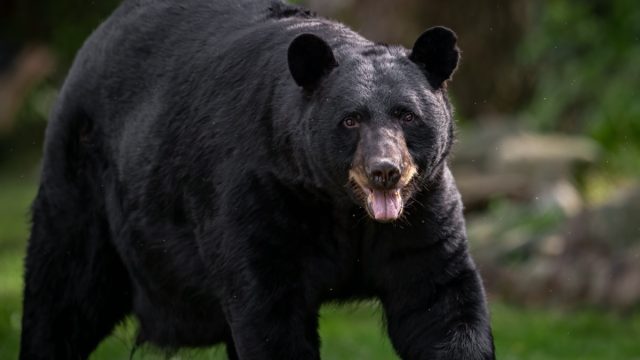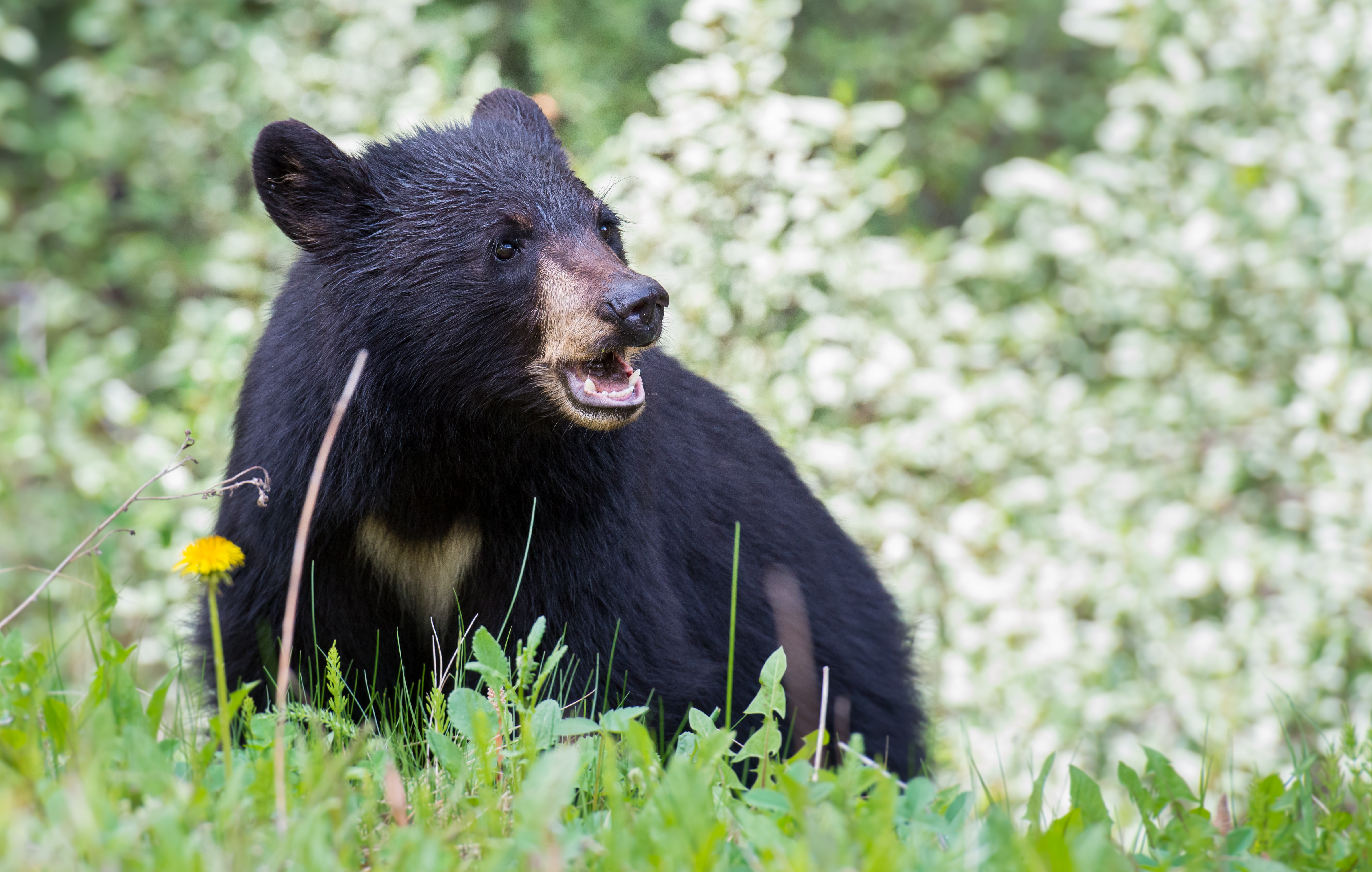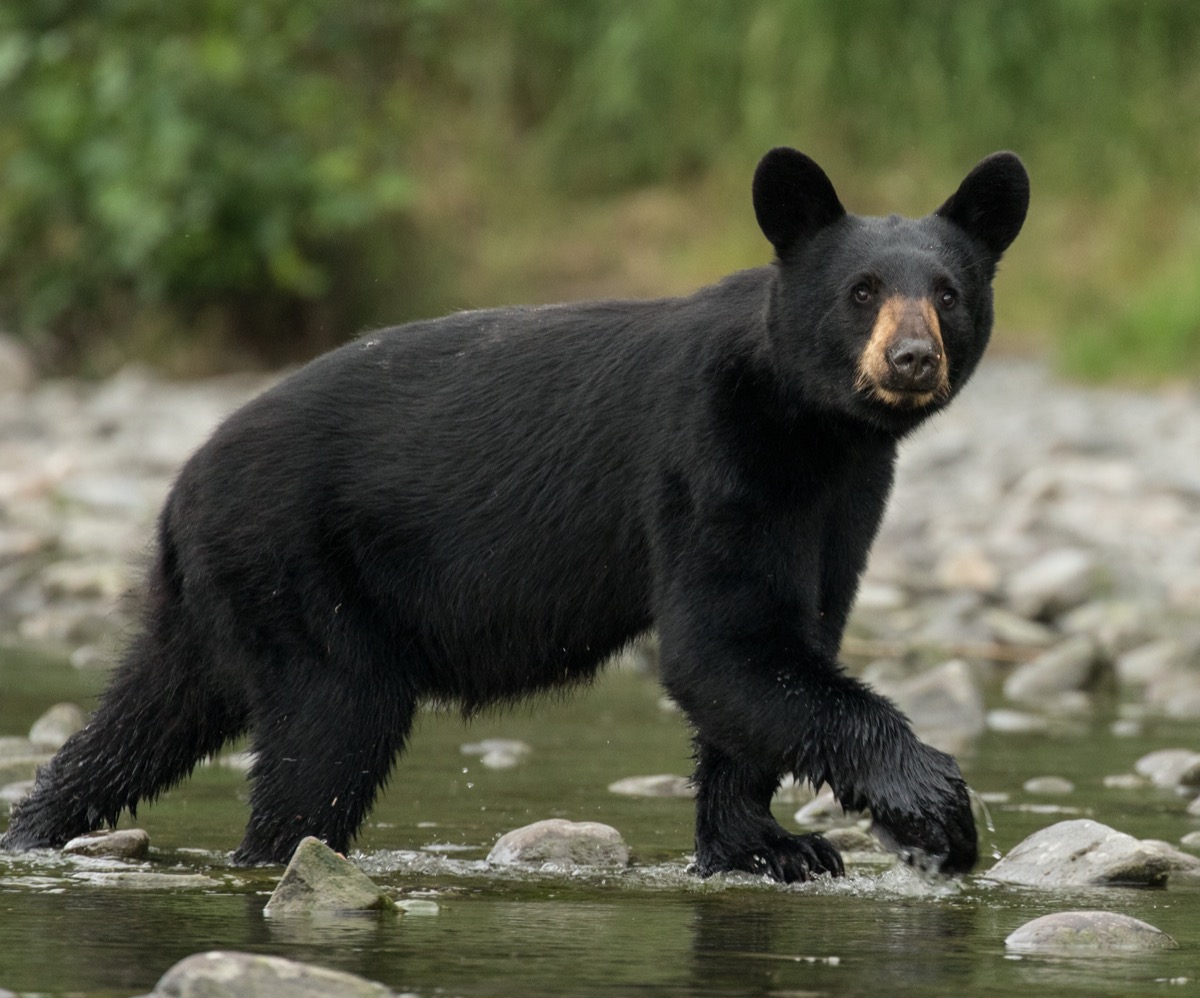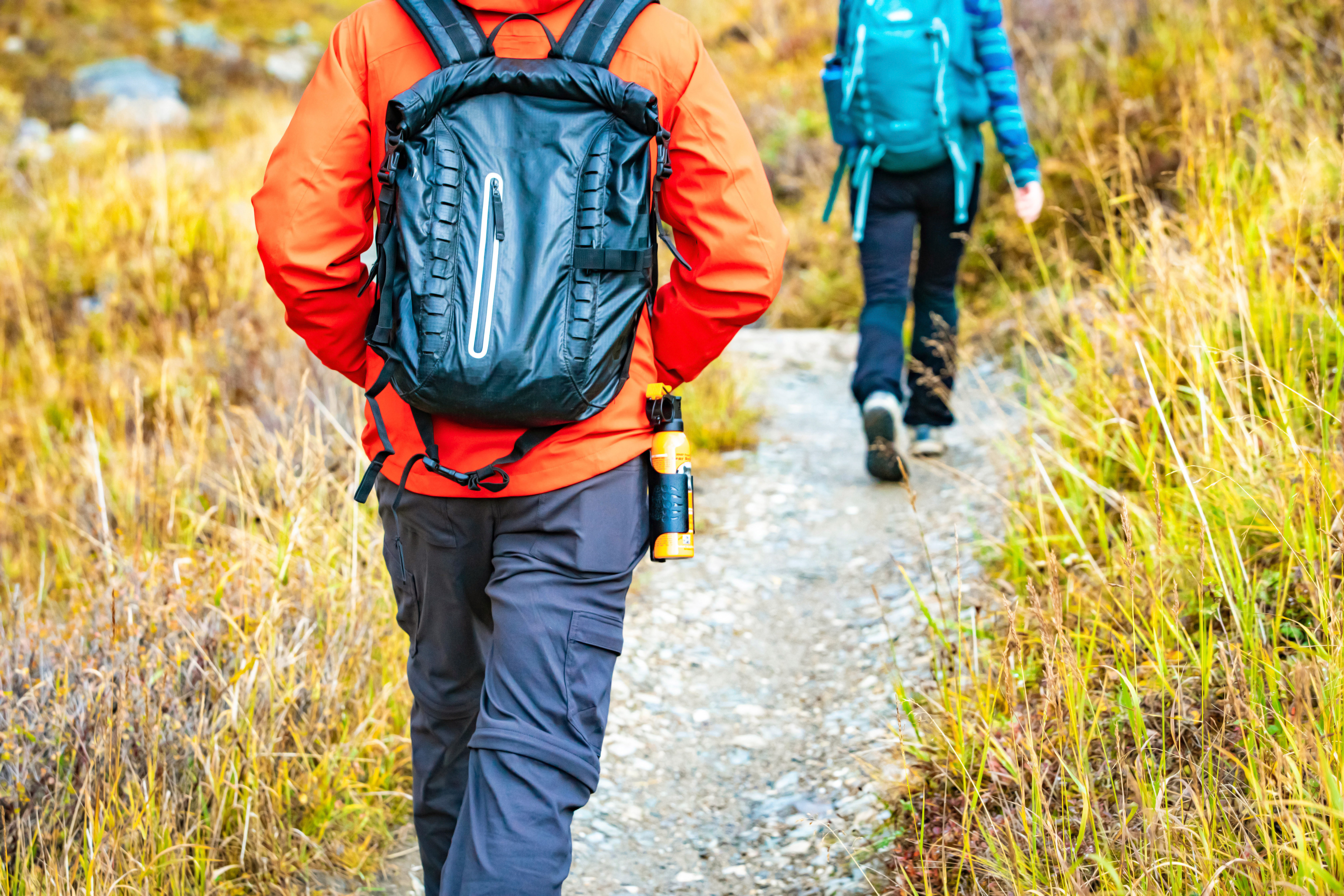If You Live In These States, Look Out for Black Bears

Black bears are beautiful, majestic, and—let’s be honest—completely frightening animals, especially if you happen to encounter one in the wild. While you may typically think of grizzly or brown bears when you think of bear attacks, there are actually exponentially more black bears in North America than brown. The U.S. is home to around 55,000 grizzlies, the majority of which live in Alaska. But according to the International Union for Conservation of Nature’s Red List of Threatened Species, there are nearly 1 million black bears in the country, and they have been spotted in 41 states.
Black bears are slightly smaller than brown bears, but they’re no less dangerous, and dozens of people have died from black bear attacks in the last 30 years. Read on to find out what states have the most bear-related deaths.
RELATED: 6 Things That Are Bringing Snakes Into Your Home.
The Southwest, Midwest, and Alaska are where most bear-related deaths have occurred.

Fox News 31 in Colorado report that half of the country’s recorded bear attacks have occurred in Montana, Wyoming, Utah, Colorado, New Mexico, and Arizona. An additional 33% of attacks occurred in Alaska. The outlet also reports that 18 people have been killed by bears in Montana since 1990. Twenty-five people died in bear incidents in Alaska over the same time period. That’s nearly one bear-related death per year.
Wyoming had 11 bear-related deaths, and Colorado had four. Tennessee saw two. Massachusetts, New York, Pennsylvania, New Hampshire, Michigan, Minnesota, New Mexico, Arizona, Utah, Washington, and West Virginia each recorded just one bear-related death over the last 30 years.
Lynn Rogers, PhD, founder of the North American Bear Center and a research scientist for the Wildlife Research Institute, said people need to put these deaths in context, however.
“Black bears have killed 61 people across North America since 1900. This no longer worries me,” she wrote on the North American Bear Center website. “My chances of being killed by a domestic dog, bees, or lightning are vastly greater. My chances of being murdered are 60,000 times greater. One of the safest places a person can be is in the woods. According to the National Park Service (NPS), your chance of being injured by a bear is approximately 1 in 2.1 million.
Bear attacks can be easily avoided if you follow this guidance.

Still, if you want to improve your odds of coming out of a bear encounter with all limbs intact, there are some precautions bear experts recommend.
“The vast majority of these negative encounters are avoidable. People don’t need to go out into bear country and get hurt, nor do bears,” Tom Smith, PhD, a biologist at Brigham Young University, told National Geographic. “These incidents are largely preventable, but humans have to take more responsibility.”
Bears are very attracted to smells, so experts suggest you be careful about what sort of scents you carry. Dave Garshelis, PhD, bear project leader at the Minnesota Department of Natural Resources, told National Geographic that food, deodorant, and even gum can attract bears.
Bear spray is a must-have for hikers.

Hikers or others wandering in the woods should always carry bear spray, a non-lethal aerosol spray meant to disarm bears. The NPS recommends that you carry spray in a holster with you rather than in your backpack, where you may struggle to access it quickly. Bear spray doesn’t have to hit the target directly, but the idea is to temporarily create a cloud of spray between you and the bear.
If the bear continues to come toward you, the NPS says, spray directly in its face. You can purchase bear spray at service stations, national park stores, and camping and outdoors stores. Keep in mind that similar sprays, like self-defense sprays, don’t have the same active ingredient as bear spray.
For more up-to-date news sent directly to your inbox, sign up for our daily newsletter.
Take special care if you have a dog.

A “disproportionate number” of bear attacks are related to dogs, Rogers told ABC News. Dog owners trying to defend their pets from attack or worrying that their animals have become victims may put themselves in harm’s way.
In 2019, for example, a Minnesota woman was killed by a black bear while vacationing in a remote area of Canada. She’d ventured out into the woods after hearing her dogs barking. Her dogs eventually returned to the cabin, but she didn’t. Authorities said they later found her body with a black bear standing over it.
Garshelis recommends to National Geographic that dog owners who are trying to break up a bear attack arm themselves with a firearm or big stick, “especially if the dog is running back to you for protection.” Bears are also scared away by banging pots and pans and other loud noises, he added.
Rogers recommends that if you see a bear in the wild you should do everything you can to remain inconspicuous.
“Bears that visit campgrounds, bird feeders, and garbage cans almost never kill people, even though these bears have by far the most contact with people,” she said.
RELATED: This One Thing in Your Yard Can Fend Off Black Widows, Study Says.